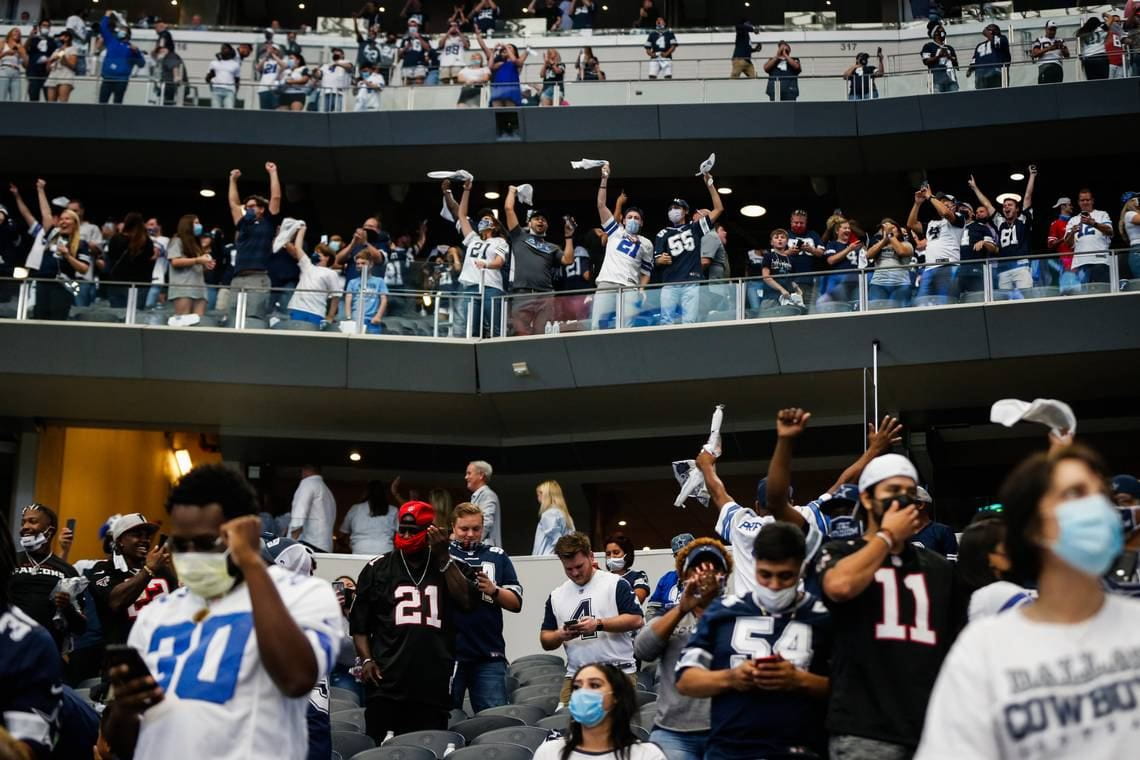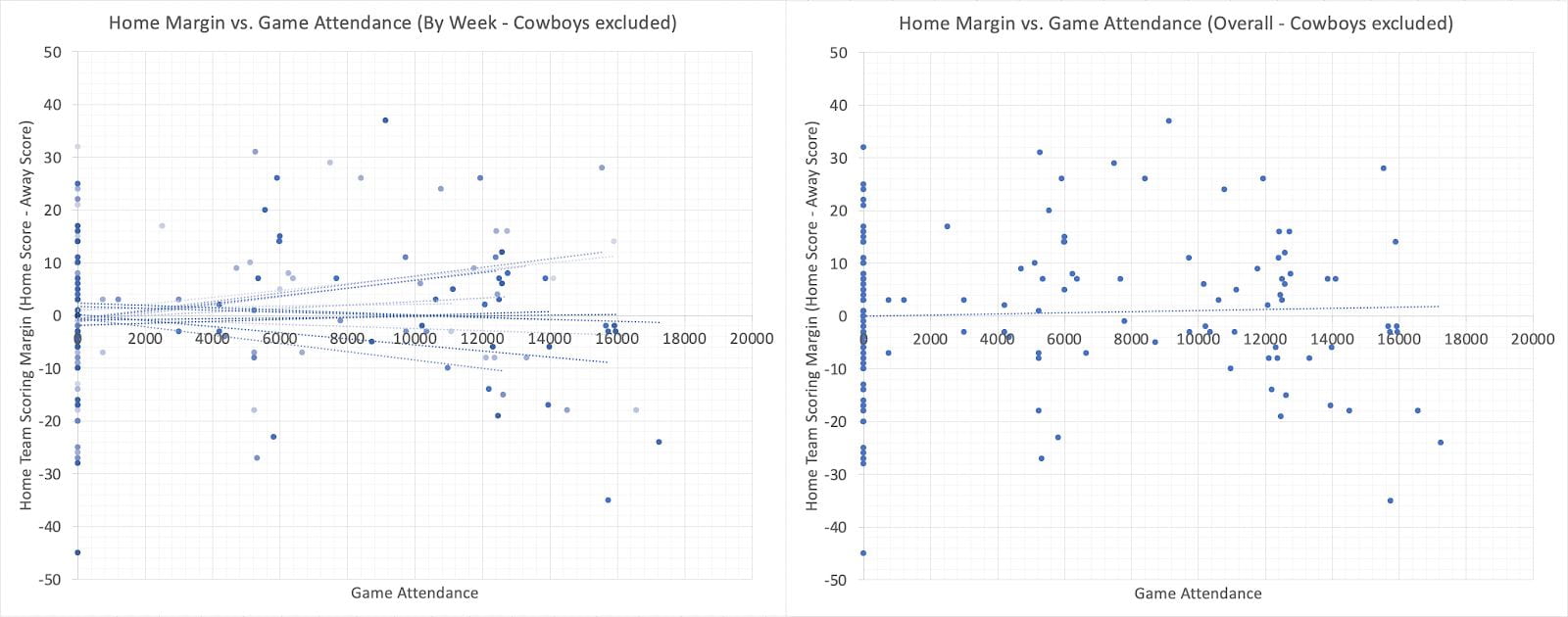Author: Ben Caterine (bencaterine2023@u.northwestern.edu), McCormick
There are few sounds more ubiquitous in sports than the roar of a home crowd. From the Cameron Crazies to Borussia Dortmund’s Yellow Wall, fans give sporting events the energy and intensity that make them so exciting. They do their part to turn stadiums into impenetrable fortresses for visiting teams, but are fans really responsible for home-field advantage? This is a difficult question, since a home advantage could be attributed to several factors. Travel difficulties, weather and conditions, venue familiarity, referee bias towards home teams, and of course sheer crowd noise could all play a role in producing a competitive advantage for the hosts, and past studies have struggled to pinpoint the true causes.
The COVID-19 pandemic has made sporting competitions almost unrecognizable compared to a year ago. Players, coaches, fans, and competition structures have all been disrupted, but the games have continued, and they provide us a unique opportunity to study fans’ impact in the absence of crowds. The 32 franchises of the National Football League have made varying decisions regarding fan attendance during the pandemic. 14 of the league’s teams have not allowed any fans into their venues during the first 13 weeks of the season. The other 18 have allowed fans in varying amounts, from 3000 to over 30,000 at some Dallas Cowboys games in AT&T Stadium.

Usually raucous on gameday, CenturyLink Field is eerily quiet during a Seahawks-49ers game. (Elaine Thompson, Associated Press)

Socially distanced fans celebrate at AT&T Stadium during a Cowboys game (Yffy Yossifor, Fort Worth Star-Telegram)
Overall, home-field advantage has virtually vanished in the NFL this season. In a typical season, home teams win 57% of games; this year, they’re winning only 50%. But we can look deeper than this. Using attendance data, game schedules and results, and penalty data, I examined how the presence (or absence) of fans has affected games in the first 13 weeks of this season.
First, I stratified games into two categories: those with any number of fans in attendance, and those without fans. Out of 83 games this season with fans, 45 have been won by the home team, for a home winning percentage of .542, while 52 of 109 fanless games have been won by the host, for a .472 home winning percentage.
These data seem in line with what we expect; the “home-field advantage” is below a typical season even for games with fans, since no stadiums are full. Home teams without fans actually have a losing record. Similarly, the home scoring margin in games with fans was +114; in games without fans, it was -107. I also looked at penalty yard data for each game to discern whether referee bias towards home teams was diminished without fans. Interestingly, the home penalty yard margin (penalty yards against away teams – penalty yards against home teams) was -35 in games with fans, meaning home teams were penalized 35 more yards than away teams. In games without fans the margin was +501, meaning away teams received far more penalty yards. Perhaps a full stadium would be more likely to intimidate officials into making biased calls, but it does not appear that the presence of fans has worsened their judgement this season.
Next, I looked into the number of fans at each game, and whether there was a correlation between attendance numbers and results. The following graphs depict the home team scoring margin (home score – away score) vs. game attendance, and each game in the 2020 season is represented by a point. I also fitted the plots with least-squares regression lines to examine trends in the data. The left graph stratifies the data by week, with darker points and lines representing more recent weeks, while the right graph displays data and a best-fit line for the entire season.
As you can see, the data here is all over the place; there seems to be very little correlation between number of fans and game score. I did notice, however, that there are some outlier away victories with very large attendances that could be impacting the data. Upon further examination, I realized that these were Cowboys games. Dallas has allowed almost twice as many fans as any other team, and they have had an exceptionally poor season thanks to a porous defense and Dak Prescott’s season-ending injury. To combat this, I removed the Cowboys’ home games from the data and graphed it again:
Now, there is a slightly positive correlation between attendance and home scoring margin, but the correlation is still very weak (R < .1). Overall, it does not appear that the number of fans played a much of a role in home-field advantage.
Home-field advantage remains a tricky phenomenon to quantify. Arrowhead Stadium in Kansas City is the loudest stadium in the world, yet half of the Chiefs’ losses over the last eight seasons have been at home. The Falcons are notorious for having a weak home environment and pumping in crowd noise, but they have the eighth best home winning percentage since 2008. It’s hard to say what exactly causes home-field advantage, but this season has made it clear that fans play a role. Winning percentages and scoring margins have been strongly in favor of home teams this year in games played in front of any number of fans; the opposite is true without fans. In a typical NFL season, home-field advantage only increases in the playoffs, so it will be fascinating to see the role fans play in this year’s playoffs as both the season and the pandemic roll on.
Sources
2020 NFL attendance data: https://www.pro-football-reference.com/years/2020/attendance.htm
Schedule grid: http://www.espn.com/nfl/schedulegrid
Box scores database: https://www.footballdb.com/games/index.html
Penalty data by game: https://www.nflpenalties.com/?year=2020
Additional statistics and sources are referenced by links throughout the article.




Be the first to comment on "Home-Field Advantage: What Difference Do Fans Make?"